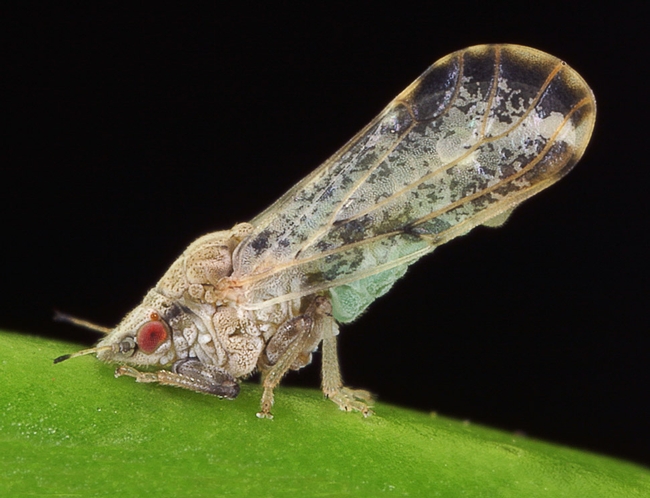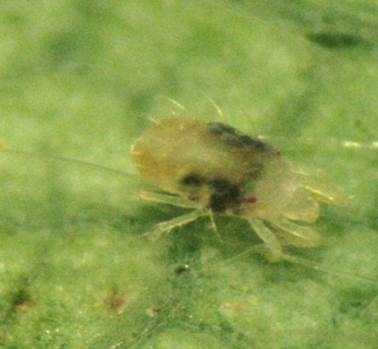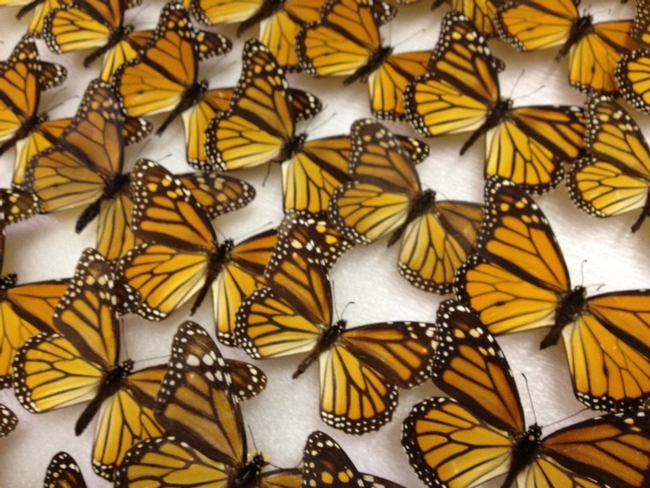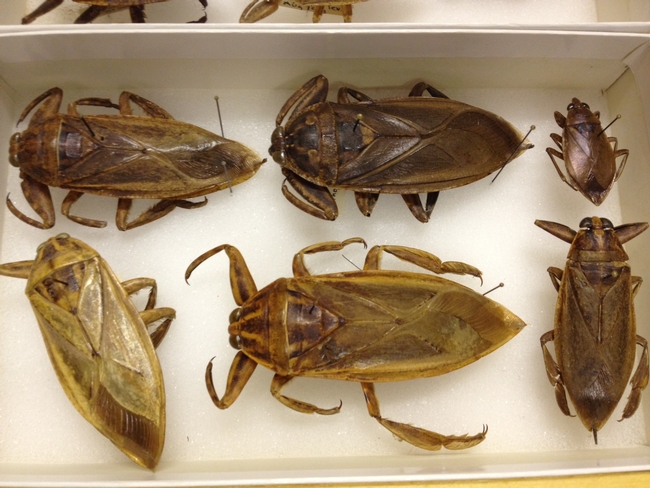- Author: Cris L. Johnson

The event includes other agricultural professionals and UC experts that will provide updates on pests, research and compliance issues.
Date: Tuesday, December 3, 2013
Time: 9:00 am to 4:00 pm
Location:
Los Angeles County Arboetum and Botanic Garden
301 N. Baldwin Ave.
Arcadia, CA 91007
Registration at the door.
Contact: Jim Downer, 805-645-1458
Learn more about the Entomological Association of Southern California here.
Meeting Agenda
- Author: Cris L. Johnson

Once a tree has been infected by the psyllid that carries and transfers the huanglongbing (HLB) bacteria to the tree there has been no alternative but to quarantine the infected area and destroy the tree. To complicate the issue further, the disease can lie dormant and be difficult to detect as the infection spreads from tree to tree.
Efforts to control the psyllid through pesticides have been ineffective and while quarantines have helped raise awareness and slowed some of the spread, a viable weapon to combat this invasive pest has been unavailable until recently.
Mark Hoddle, director at the Center for Invasive Species Research at UC Riverside, has been experimenting with a tiny parasitic wasp, Tamarixia radiata, that feeds on and kills the psyllid. After a series of tightly controlled and successful tests, the wasps have been released on infected sites and have been effective in reducing the psyllid population. There is no danger to pets or humans and the release program has been approved by the Department of Agriculture.

To learn more about this effort, please see the UC Riverside Newsroom article.
- Author: Cris L. Johnson

The website explores chemical injury, nutritional disorders, physical and physiological disorders found in the field and during research. The team collaborates and shares information about these issues and discuss methods for dealing with them.
The website is presented in English and in Spanish and is accompanied by large photos that focus on the problem areas.
Check out the new website: Strawberry Disorders: Identification and Management.
- Author: Cris L. Johnson

Spider mites are a major recurring pest of strawberry. If left untreated, these pests will infest fields, decrease yield and eventually kill your plants. Several methods are available to help control spider mites on strawberry including biological control (i.e., predatory mites) and miticides. Watch this video to learn more about spider mites in strawberry and their control:
- Author: Iqbal Pittalwala
Possibly, people could be divided into the following two groups: those who knowingly eat insects, and those who think they have never eaten them. Since I am still assailed by the odd nightmare in which I am bringing to my lips a well-cooked bug that suddenly springs to life, I decided to tackle my bug-food phobia by visiting entomologist Douglas Yanega of UC Riverside last week.
Yanega has eaten insects, even relished them. With no difficulty whatsoever he has ingested honey bees, termites, mealworms, crickets, grasshoppers, ants, June beetles, silkworms and even scorpions.
“These admittedly were not very tasty,” said Yanega, who is the senior museum scientist in the Entomology Research Museum, where he studies, identifies and catalogs insects. “In Thailand, however, I had queen weaver ants — a gourmet food there that tastes like either peanut butter or lemon, depending on which body part you’ve sunk your teeth into — and deep-fried mole crickets. Both were delicious!”
Eating insects is not unusual in Thailand, Yanega explained. Insects, a good source of highly digestible protein, are part of the diet in Korea, China and Mexico as well.
“You get more bang for the buck when you eat insects, where protein is concerned,” Yanega said. “True, the outer hardened shell is often not digestible, but the softer, internal tissues are. Of course, you want to avoid toxic insects. There are some that could kill you if you ate them.”
How does one know if an insect is toxic? In general, herbivorous insects tend to be more edible. Moreover, insects have evolved to alert other critters — and us! — that they are not suitable for consumption. Bright colors like red, orange or yellow juxtaposed with black on insect bodies are a sure warning from insects that you’d better stay away.
“Think of monarch butterflies, ladybird beetles, tiger moths. You never want to eat them,” Yanega said. “Some tiger moths will even make a noise to warn you to stay away. Other bugs will defensively ooze nasty secretions in your mouth, the moment you bite, to force you to spit them out and free them.”
Because few people experiment with eating insects, identifying those that are both edible and delicious can be a big challenge.
“You have, in the middle of the bell curve of insects, a whole lot that are edible but taste awful,” Yanega said. “And there are those at one end of the curve that are just toxic. But at the other end of this curve lie the prized ones: these are edible and tasty.”
In the United States, most people are culturally still averse to eating insects. If you travel to Mexico, however, you might eat stinkbugs, sometimes used to flavor food. Farther off, in Japan, you could enjoy wasp grubs and silkworm larvae. In the mainland parts of Southeast Asia, you can savor giant water bugs and mole crickets.
“In Laos, they eat just about any available insect,” Yanega said. “Some insects are eaten raw, sometimes with small parts removed. Other insects are served deep fried or grilled.”
According to Yanega, one way to get introduced to an entomological diet is to first dry out insects, and then grind them up to a powder.
“You can use this powder as a supplement,” he said. “It’s the easiest way to go about eating insects as food. You can mix the powder into, say, wheat flour to get 'insect-enriched flour.'
If you’re cringing, rest assured that most of us already eat insects unknowingly. Much of food coloring uses insects. The waxy coloring that coats candies is oftentimes insect-based. And a lot of fresh produce has a built-in level of “insect contamination.”
“As long as you are not allergic to an edible insect, you’re safe eating it,” Yanega said. “If you can get past your phobia or stigma of putting bugs in your mouth, you should have no difficulty in adding insects to your diet.”
Which is what most of us would have to do if we found ourselves stranded on an island and famished.
“Should that happen, never mind the brightly colored bugs,” Yanega said. “Instead, go after the ones that are cryptically colored, the ones that look as though they are hiding from something. They would be a much better bet."






